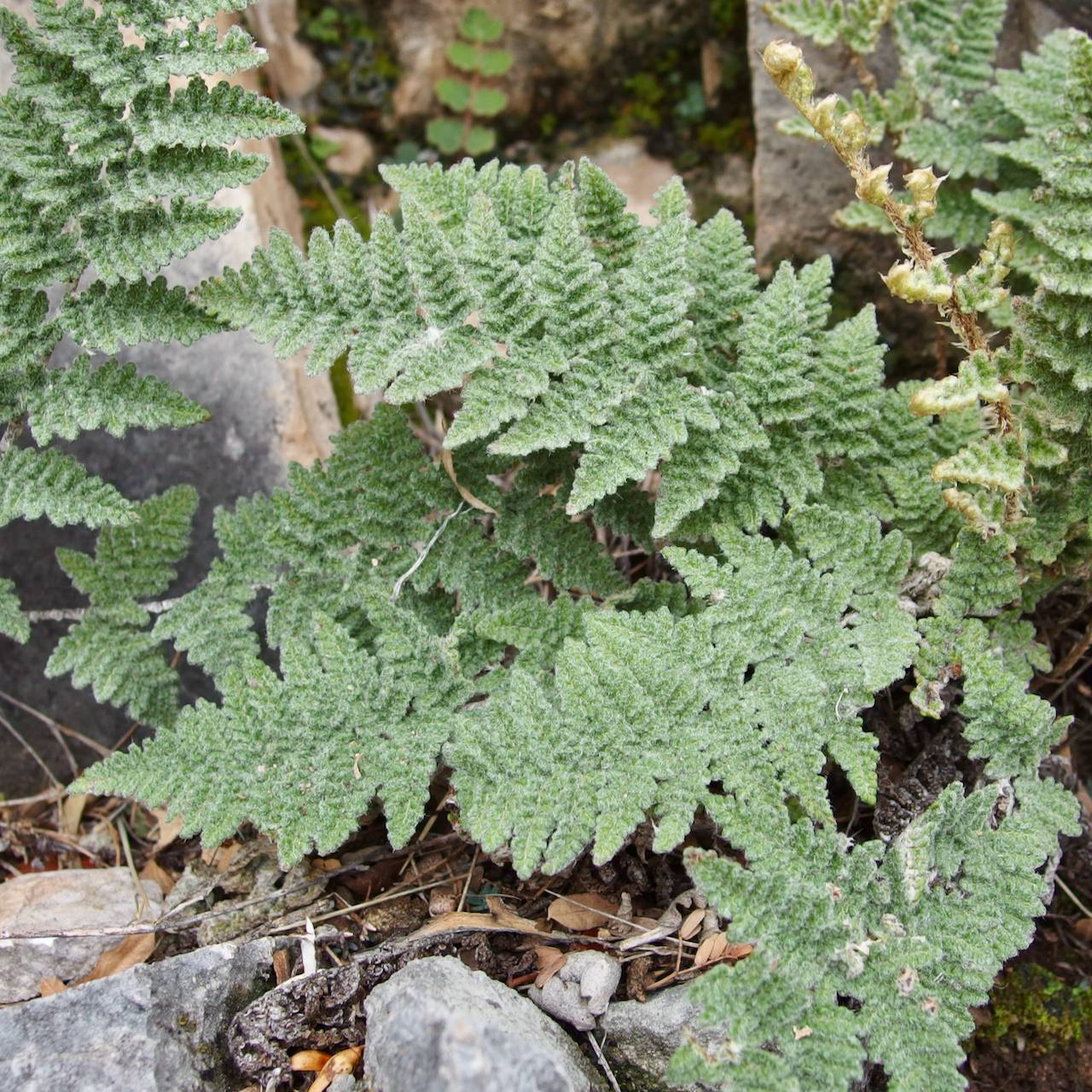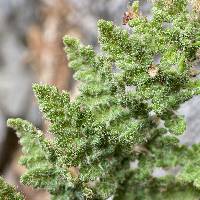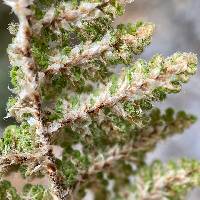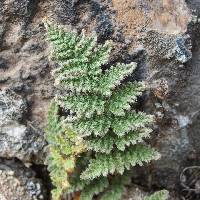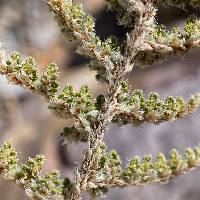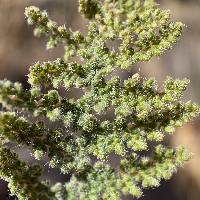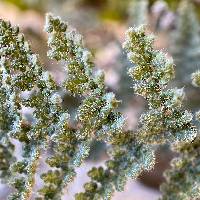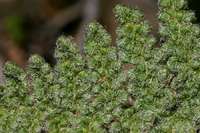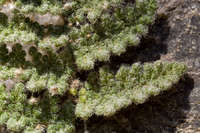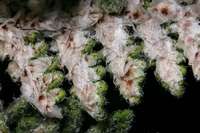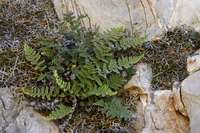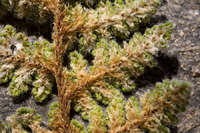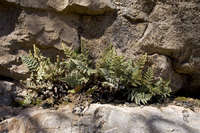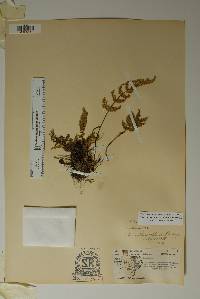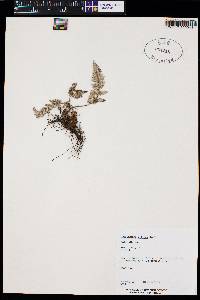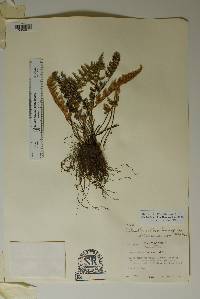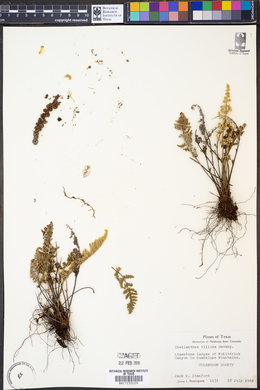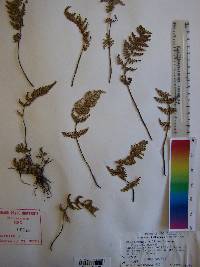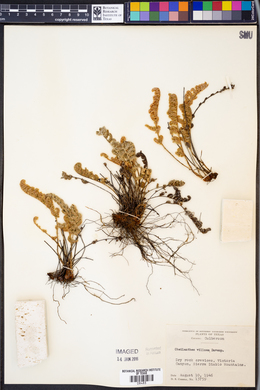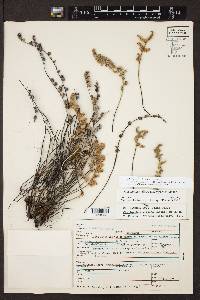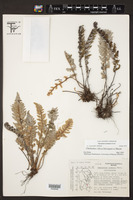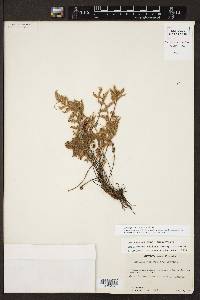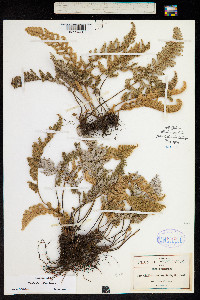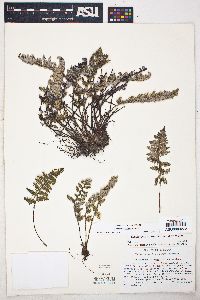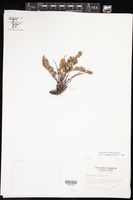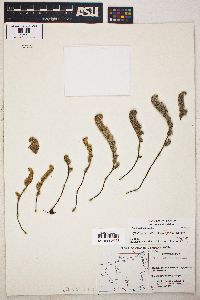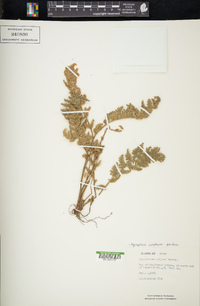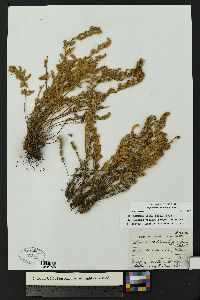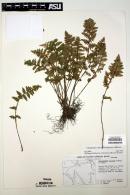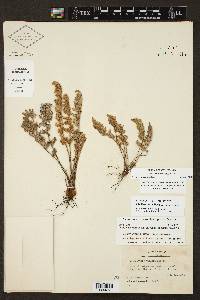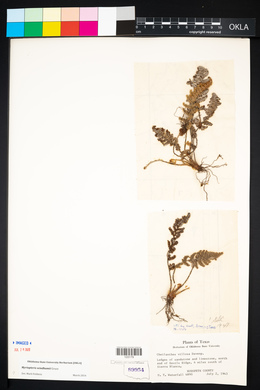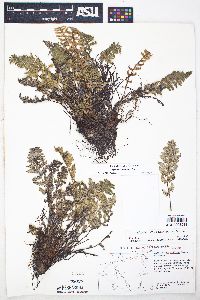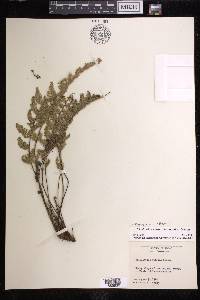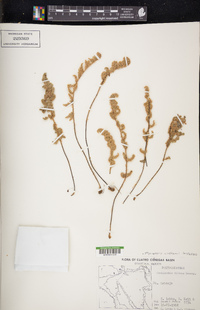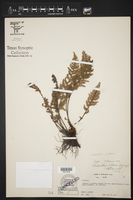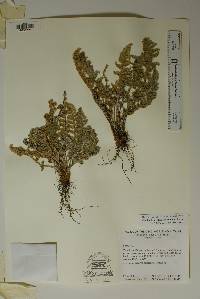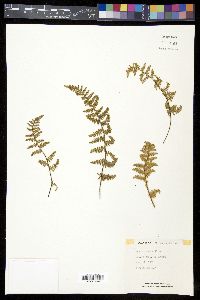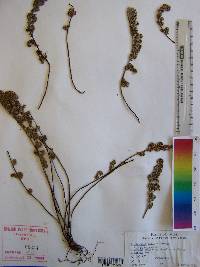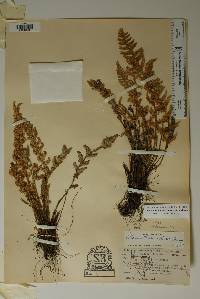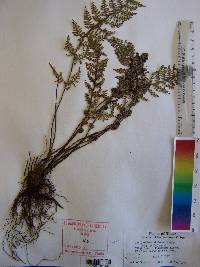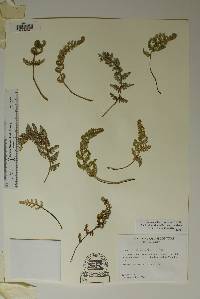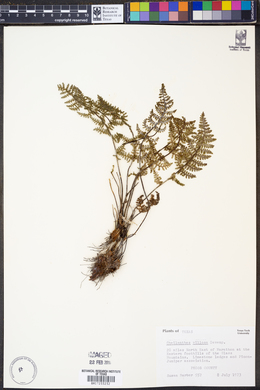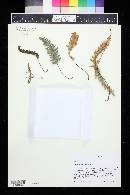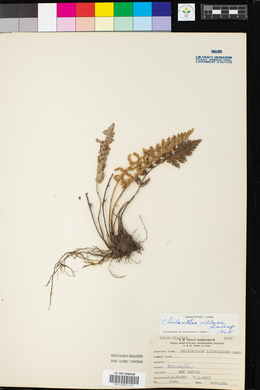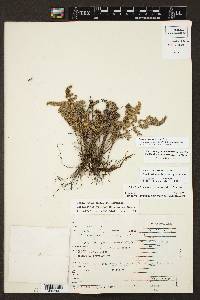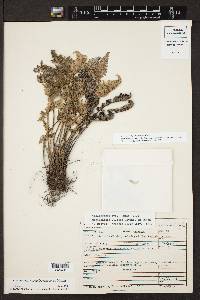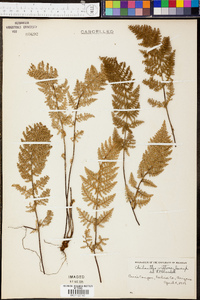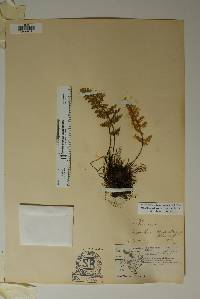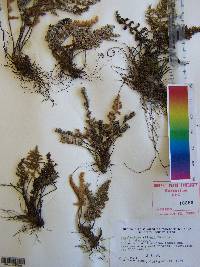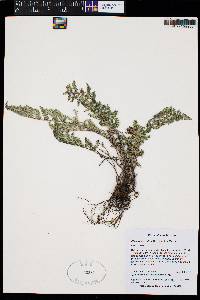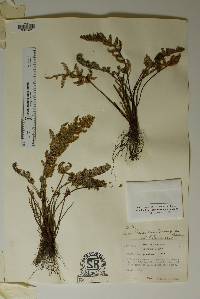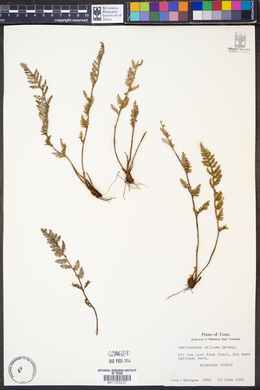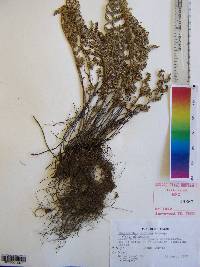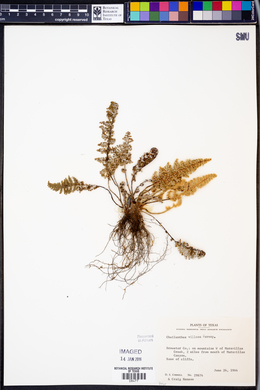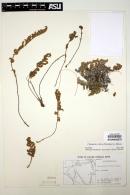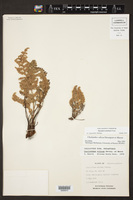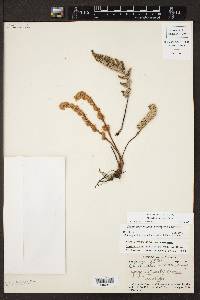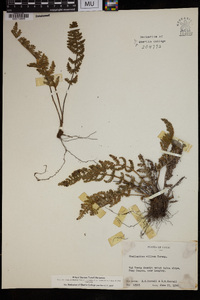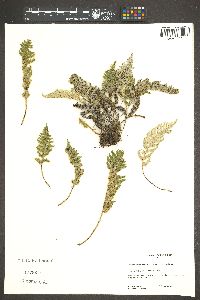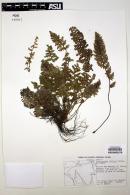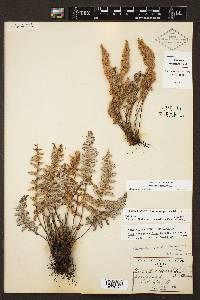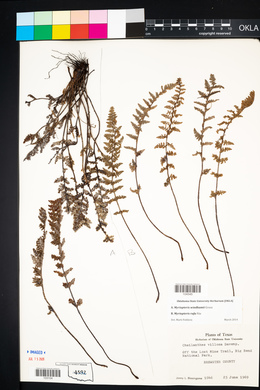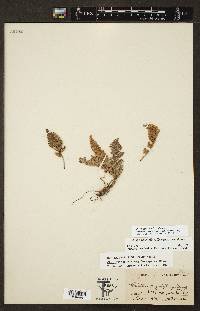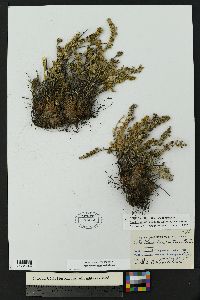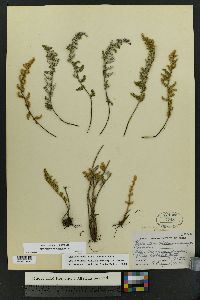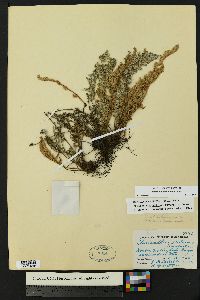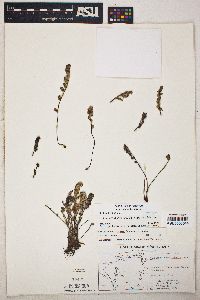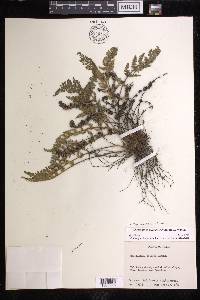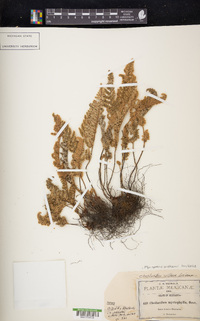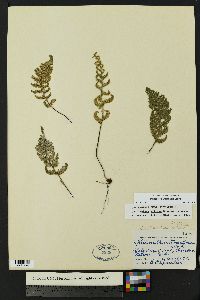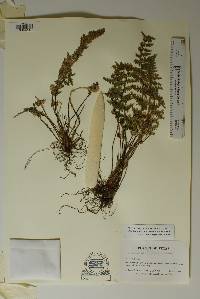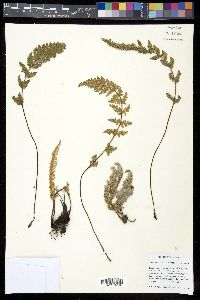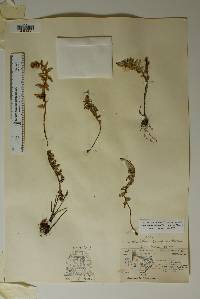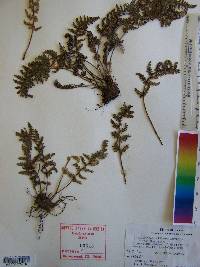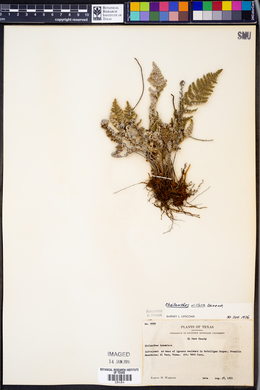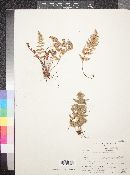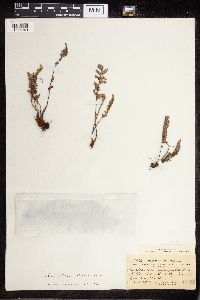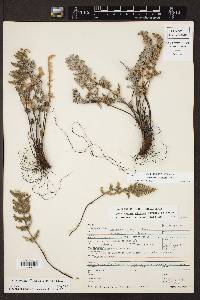
|
|
|
|
Family: Pteridaceae
Villous Lip Fern, more...villous lipfern
[Cheilanthes villosa Davenport ex Maxon] |
Stems compact, 4--8 mm diam.; scales mostly bicolored, with broad, well-defined, dark, central stripe and narrow, light brown margins, linear-lanceolate, straight to slightly contorted, loosely appressed, persistent. Leaves clustered, 7--30 cm; vernation noncircinate. Petiole usually dark brown, rounded adaxially. Blade oblong-lanceolate to ovate, 3--4-pinnate at base, 1.5--5 cm wide; rachis rounded adaxially, with scattered filiform to lanceolate scales, not pubescent. Pinnae not articulate, dark color of stalk continuing into pinna base, basal pair not conspicuously larger than adjacent pair, usually equilateral, appearing villous adaxially. Costae green adaxially for most of length; abaxial scales multiseriate, ovate to lanceolate, shallowly cordate at base, often with overlapping basal lobes, conspicuous, the largest 0.4--1.5 mm wide, strongly imbricate, often concealing ultimate segments, erose-dentate, not ciliate. Ultimate segments round to oval, beadlike, the largest 1--2 mm, abaxially nearly glabrous except for a few coarse hairs, adaxially villous with coarse, unbranched hairs. False indusia marginal to obscurely inframarginal, slightly differentiated, 0.05--0.25 mm wide. Sori ± continuous around segment margins. Sporangia containing 32 spores. n = 2 n = 90, apogamous. Sporulating summer--fall. Cliffs and rocky slopes, usually on limestone; 400--2200 m; Ariz., N.Mex., Tex.; n Mexico. Cheilanthes villosa is an apogamous triploid of unknown parentage. Although there are reports of hybridization between C . villosa and C . eatonii (D. B. Lellinger 1985), recent gene exchange is unlikely because both taxa are apogamous in North America. Morphologically intermediate specimens (tentatively called C . pinkavii in T. Reeves 1979) are included here in C . eatonii , pending further study and valid publication of Reeve's epithet.
General: Clustered leaves 7-30 cm tall, from compact stems, 4-8 mm in diameter, scales bicolored with dark central strip and narrow, light brown margins, linear-lanceolate, loosely appressed and persistent, noncircinate vernation. Leaves: On dark brown petiole, rounded above, blade oblong-lanceolate to ovate, 3-4 pinnate at base, 1.5-5 cm wide, rachis rounded above, with scattered filiform to lanceolate scales; pinnate not articulate, appearing villous above; costae green above for most of length, densely scaly below, scales multiseriate, ovate to lanceolate, shallowly cordate at base, often with overlapping basal lobes, largest 0.4-1.5 mm wide, strongly imbricate, often concealing ultimate segments, erose-dentate, not ciliate; ultimate segments round to oval and beadlike, largest 1-2 mm, glabrous below except for few coarse hairs, villous above with coarse unbranched hairs. Sporangia: False indusia marginal, sori continuous around segment margins, apogamous. Ecology: Found on cliffs and rocky slopes, often on limestone from 2,000-4,000 ft (610-1219 m); sporulates summer-fall. Notes: Distinguished by the overlapping ovate scales beneath, which are papery and white marginally, and cover the entire underside. Etymology: Cheilanthes is from Greek cheilos for lip and anthos for flower, while villosa means hairy. Sources: FNA 1993, Dittmer et al. 1954, Kearney and Peebles 1969 FNA 1993, Dittmer et al. 1954, Kearney and Peebles 1969 Common Name: villous lipfern General: Clustered leaves 7-30 cm tall, from compact stems, 4-8 mm in diameter, scales bicolored with dark central strip and narrow, light brown margins, linear-lanceolate, loosely appressed and persistent, noncircinate vernation. Leaves: On dark brown petiole, rounded above, blade oblong-lanceolate to ovate, 3-4 pinnate at base, 1.5-5 cm wide, rachis rounded above, with scattered filiform to lanceolate scales; pinnate not articulate, appearing villous above; costae green above for most of length, densely scaly below, scales multiseriate, ovate to lanceolate, shallowly cordate at base, whitish and turning rusty brown with age, often with overlapping basal lobes, largest 0.4-1.5 mm wide, strongly imbricate, often concealing ultimate segments, erose-dentate, not ciliate; ultimate segments round to oval and beadlike, largest 1-2 mm, glabrous below except for few coarse hairs, villous above with coarse unbranched hairs. Sporangia: False indusia marginal, sori continuous around segment margins, apogamous. Ecology: Found on cliffs and rocky slopes, often on limestone from 2,000-4,000 ft (610-1219 m); sporulates summer-fall. Notes: Distinguished by the overlapping ovate scales beneath, which are papery and white marginally, and cover the entire underside. Ethnobotany: Unknown Etymology: Cheilanthes is from Greek cheilos for lip and anthos for flower, while villosa means hairy. Synonyms: Myriopteris windhamii Editor: SBuckley, 2010 |
|
|
|
This project was made possible in part by the Institute of Museum and Library Services [MG-70-19-0057-19].
Powered by Symbiota

